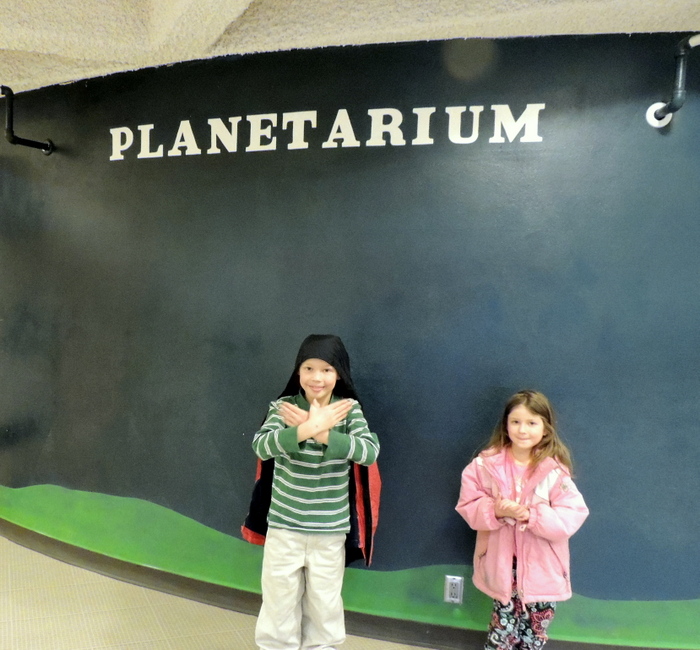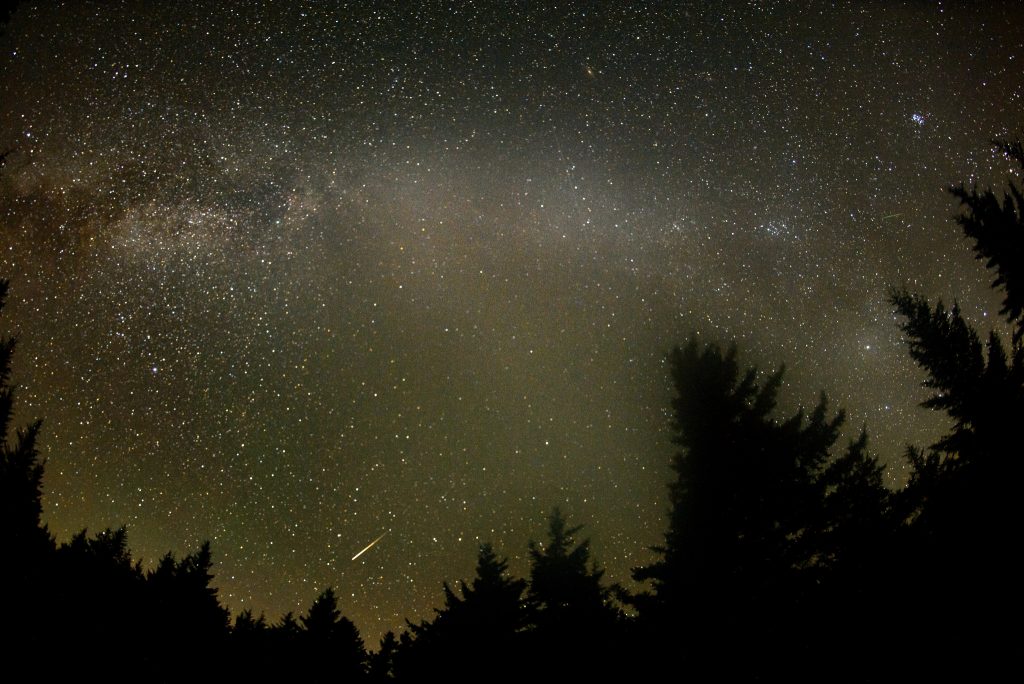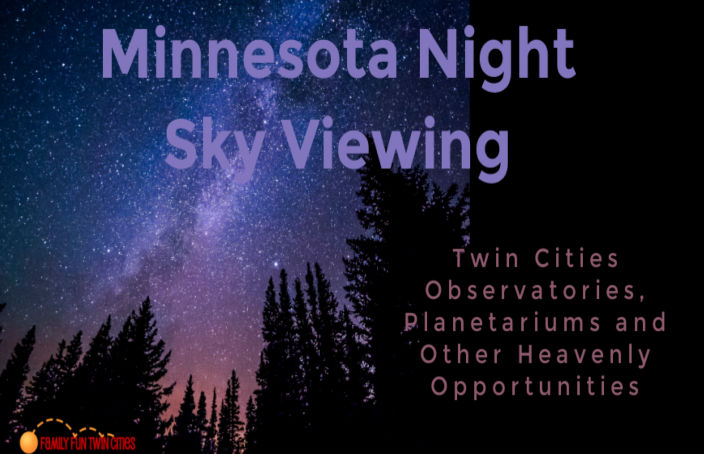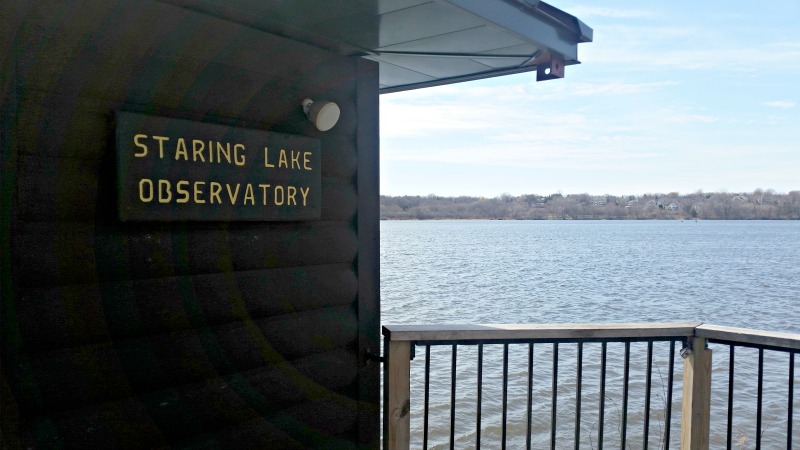Looking for a place you can use a telescope? In Minnesota, night sky viewing can be a fun family activity that can engage everyone from toddlers to adults – even the tough teen/tween crowd may find a trip to an observatory fun. When kids are younger, a family can just go out in their yard or a nearby park and look up. Unfortunately, the closer you live to the metro center, the less you can see through the light pollution of the cities. If you want to see more, we have several observatories and two planetariums in the Twin Cities. State and regional parks outside the cities will also offer viewing opportunities.
Twin Cities Observatories for Minnesota Night Sky Viewing
An observatory is simply an structure that houses a telescope. Telescope events at these locations will be dependent on weather and are held in the evenings when the sky is visible. We have several in the Twin Cities, including:
Eagle Lake Observatory
Eagle Lake Observatory, County Road 33, Norwood Young America, MN 55397
This viewing building is located in Baylor Regional Park in Norwood Young America and is run by the Minnesota Astronomical Society (“MAS”). Family-friendly events include Astronomy Days and an annual camping event. Find upcoming events here.
Eisenhower Observatory
1001 Highway 7, Hopkins, MN 55305
The observatory in Hopkin’s Eisenhower Observatory normally hosts viewing nights during the school year (September through May). Still on hold as of Sept. 2022. Find current viewing dates here.
Minnesota Institute for Astrophysics
Tate Laboratory of Physics, 116 Church Street SE, Minneapolis, MN 55455
The University of Minnesota’s Astrophysics department traditionally offers Public Telescope Observing Nights on Fridays during the school year. Back in 2022! September 16 to December 19, 2022. 8pm Presentation in Room B20, followed by an 8:30pm Telescope observation when weather permits in Room 510.
Staring Lake Observatory
13765 Staring Lake Parkway Eden Prairie, Minnesota 55347
Eden Prairie’s observatory holds the largest telescope in the state. Eden Prairie hosts events most weekends throughout the year, including Star Watch Astronomy. Find and register for Star Watch Astronomy events here.
Twin Cities Planetariums For Day Viewing
Unlike an observatory, where you can view the night sky through telescopies, a planetarium uses special projectors and a dome ceiling to simulate the sky on a dome. The plus of a planetarium is that you can visit anytime, night or day, and you are not dependent on weather to view the sky.
Bell Planetarium
Bell Museum, Larpenteur Avenue West, Saint Paul, MN 55113
Visits to the Bell Museum of Natural History can include a Planetarium show for a small fee. Normally, the museum runs several showtimes per day. Besides the indoor Planetarium, look for monthly Star Parties with outdoor viewing when weather permits. Find and sign up for astronomy events through their Eventbrite page.

Como Planetarium
Como Elementary School, 780 W Wheelock Pkwy, St Paul, MN 55117
Como Planetarium serves the St. Paul School District but also offers public viewing times and events. Learn more and find upcoming dates here.

Other Ways to View the Heavens
Universe in the Park
This FREE annual program by the University of Minnesota rotates through Minnesota parks during the summer months. Most of these parks are at least an hour outside the Twin Cities, but a few of the events are held at close by State Parks. Learn more about Universe in the Park here.
Become a Night Explorer Junior Ranger
Earn a virtual Junior Ranger badge from the National Park Service by printing and completing this booklet. Kids will learn about:
- How to find the North Star
- Constellation mythology and write their own myth
- Moon phases
- Stars and galaxies
- The night environment at a national park.
Kids can also earn a Spaceflight Explorer virtual badge.
Astrological events to view with the naked eye.
- Northern Lights – Explore Minnesota tells us when and where to view the Northern Lights in Minnesota.
- Meteor Showers – Add these annual meteor showers to your family calendar.
- Lunar Eclipses -We haven’t been very lucky with viewing lunar eclipse. But find a calendar of upcoming lunar eclipses viewable from the Twin Cities, here.
- Full Moons or Moon Phases – The easiest to plan, of course, are moon phases, since we are blessed with at least one full moon a month. Space.com shares the full moon dates and each full moon’s name.

Published: August 12, 2016
In this 30 second exposure, a meteor streaks across the sky during the annual Perseid meteor shower Friday, August 12, 2016 in Spruce Knob, West Virginia.


